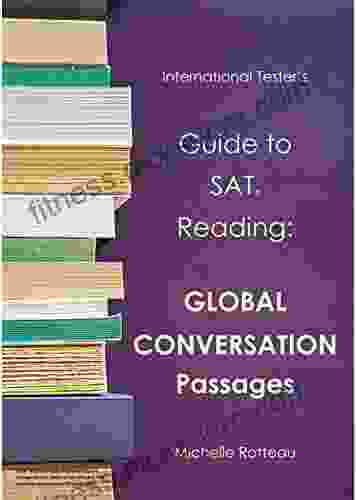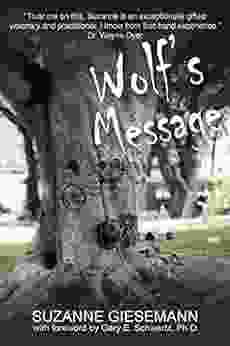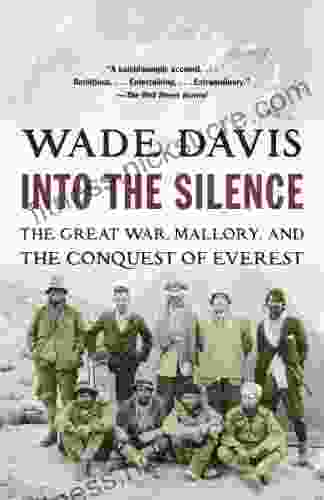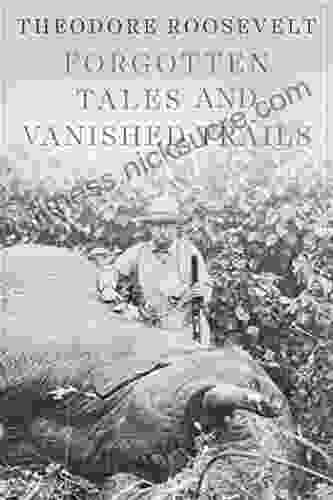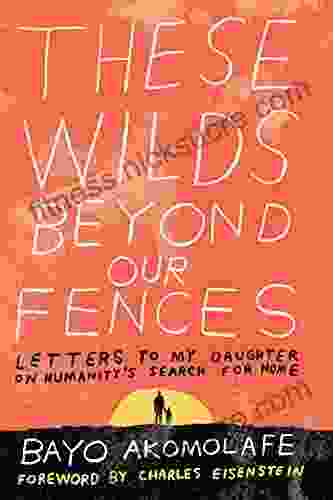The Ultimate Guide to SAT Reading: Strategies, Tips, and Practice

4.3 out of 5
| Language | : | English |
| File size | : | 1414 KB |
| Text-to-Speech | : | Enabled |
| Screen Reader | : | Supported |
| Enhanced typesetting | : | Enabled |
| Print length | : | 129 pages |
| Lending | : | Enabled |
The SAT Reading section is designed to evaluate your ability to understand complex texts and draw inferences from them. It is a crucial component of the SAT, and your score on this section can significantly impact your college admissions prospects. This comprehensive guide will provide you with all the strategies, tips, and practice you need to master the SAT Reading and achieve a high score.
Section Overview
The SAT Reading section consists of five passages, each followed by a set of multiple-choice questions. The passages cover a wide range of topics, including literature, science, history, and social studies. The questions test your comprehension, analysis, and critical thinking skills.
Each passage is approximately 650-850 words long, and you will have about 13 minutes to read and answer the questions. It is essential to pace yourself and manage your time wisely to ensure that you have enough time to complete all the questions.
Question Types
There are five main types of questions in the SAT Reading section:
- Main Idea: These questions ask you to identify the central theme or argument of the passage.
- Evidence: These questions require you to find specific information in the passage to support a statement or claim.
- Inference: These questions ask you to make logical deductions or draw s based on the information presented in the passage.
- Vocabulary in Context: These questions test your understanding of vocabulary words as they are used in the passage.
- Rhetorical Structure: These questions ask you to analyze the author's style, organization, and purpose.
Strategies for Success
1. Preview the Passage
Before you start reading, take a few moments to preview the passage. This will help you get a general idea of the topic and structure. Look at the title, , headings, and any images or graphs that may provide additional context.
2. Active Reading
As you read, engage actively with the text. Highlight or underline key concepts, and make notes in the margins to indicate your thoughts and interpretations. This will help you stay focused and remember the important information.
3. Identify the Main Idea
The main idea is the central theme or argument of the passage. It is usually stated in the or . Once you have identified the main idea, it will be easier to answer the questions.
4. Look for Evidence
When answering evidence-based questions, be specific and provide textual evidence to support your answer. Cite the line numbers or paragraphs where the relevant information can be found.
5. Make Inferences
Inferences are s that you draw based on the information in the passage. When answering inference questions, be careful not to over-interpret or make assumptions that are not supported by the text.
6. Build Vocabulary
A strong vocabulary is essential for SAT Reading. Familiarize yourself with commonly tested words and practice using them in context. Consider using flashcards or online vocabulary building programs.
7. Manage Your Time
Time management is crucial on the SAT Reading section. Allocate specific time to each passage and question type to ensure that you have enough time to complete all the questions.
Tips for Specific Question Types
Main Idea Questions
* Look for the topic sentence in the or . * Identify the author's purpose and the key points discussed in the passage. * Summarize the passage in your own words.
Evidence Questions
* Carefully read the question stem to understand what information is being asked. * Search the passage for specific details that match the question. * Cite the line numbers or paragraphs where the answer can be found.
Inference Questions
* Identify the specific information in the passage that supports your inference. * Make logical deductions and avoid making assumptions. * Consider multiple perspectives and interpretations.
Vocabulary in Context Questions
* Read the sentence or paragraph where the vocabulary word appears. * Determine the meaning of the word based on its context. * Use context clues and eliminate answer choices that do not make sense.
Rhetorical Structure Questions
* Analyze the author's organization, tone, and language. * Identify the purpose of specific paragraphs or sections. * Understand how the author uses rhetorical devices to persuade or inform the reader.
Practice Questions
To improve your SAT Reading skills, it is essential to practice as much as possible. Here are some sample questions to get you started:
Passage:
The Industrial Revolution was a period of great social and economic change in the Western world. It began in Great Britain in the mid-18th century and spread to other parts of Europe and the United States. The Industrial Revolution led to the development of new technologies, such as the steam engine and the cotton gin, which increased productivity and transformed the way people lived and worked. However, the Industrial Revolution also had negative consequences, such as pollution and worker exploitation.
Questions:
1. What was the main cause of the Industrial Revolution? 2. Provide an example of a specific invention that resulted from the Industrial Revolution. 3. What were some of the negative consequences of the Industrial Revolution?
Answers:
1. The Industrial Revolution was primarily driven by technological advancements and the rise of capitalism. 2. One notable invention that emerged during the Industrial Revolution was the steam engine, which revolutionized transportation and manufacturing. 3. Negative consequences of the Industrial Revolution included environmental pollution, rampant urban poverty, and the exploitation of workers, particularly children and women.
Mastering the SAT Reading section requires a combination of strategies, practice, and a solid understanding of the different question types. By following the tips and practicing regularly, you can improve your reading comprehension, critical thinking skills, and vocabulary. With consistent effort and a positive mindset, you can achieve a high score on the SAT Reading and enhance your chances of success in college admissions.
4.3 out of 5
| Language | : | English |
| File size | : | 1414 KB |
| Text-to-Speech | : | Enabled |
| Screen Reader | : | Supported |
| Enhanced typesetting | : | Enabled |
| Print length | : | 129 pages |
| Lending | : | Enabled |
Do you want to contribute by writing guest posts on this blog?
Please contact us and send us a resume of previous articles that you have written.
 Fiction
Fiction Non Fiction
Non Fiction Romance
Romance Mystery
Mystery Thriller
Thriller SciFi
SciFi Fantasy
Fantasy Horror
Horror Biography
Biography Selfhelp
Selfhelp Business
Business History
History Classics
Classics Poetry
Poetry Childrens
Childrens Young Adult
Young Adult Educational
Educational Cooking
Cooking Travel
Travel Lifestyle
Lifestyle Spirituality
Spirituality Health
Health Fitness
Fitness Technology
Technology Science
Science Arts
Arts Crafts
Crafts DIY
DIY Gardening
Gardening Petcare
Petcare Sir E A Wallis Budge
Sir E A Wallis Budge Erez Morabia
Erez Morabia Alice Roberts
Alice Roberts Eric Layton
Eric Layton Alexandria Moran
Alexandria Moran Henry Gilbert
Henry Gilbert Karin Slaughter
Karin Slaughter German Raigosa
German Raigosa Robert P Crease
Robert P Crease Lynne Robinson
Lynne Robinson Sam Thoma
Sam Thoma Tom Mackie
Tom Mackie Amy Pickar Abernethy
Amy Pickar Abernethy Scott Linden
Scott Linden Mikel Jollett
Mikel Jollett Jill Simonian
Jill Simonian Peggy Vincent
Peggy Vincent Alice Scordato
Alice Scordato William King
William King Alfred North Whitehead
Alfred North Whitehead Jermaine Harris
Jermaine Harris Tim Maudlin
Tim Maudlin Elizabeth Clare Prophet
Elizabeth Clare Prophet Carol Ekarius
Carol Ekarius Ally Nathaniel
Ally Nathaniel Glade B Curtis
Glade B Curtis Ruby Vincent
Ruby Vincent Paul Asay
Paul Asay Nic Sheff
Nic Sheff Emma Lock
Emma Lock Brian D Ambrosio
Brian D Ambrosio John Pirillo
John Pirillo Susan Jules
Susan Jules Doc Norton
Doc Norton David Armitage
David Armitage Krissy Moehl
Krissy Moehl Joy S Kasson
Joy S Kasson Alicia Ranoldo
Alicia Ranoldo Virgil Herring
Virgil Herring Dean Pohlman
Dean Pohlman Rob Price
Rob Price Alexandra Heminsley
Alexandra Heminsley John C Hudson
John C Hudson Robin Kaplan M Ed Ibclc
Robin Kaplan M Ed Ibclc Rosary O Neill
Rosary O Neill Mary Johnson
Mary Johnson Peter Stark
Peter Stark Joshua Coleman Phd
Joshua Coleman Phd Adrian Dingle
Adrian Dingle Martha Sears
Martha Sears Judith Levin
Judith Levin Damon Centola
Damon Centola Nick Littlehales
Nick Littlehales Alexis Averbuck
Alexis Averbuck Bernie Clark
Bernie Clark Daniel Young
Daniel Young Carlton Kirby
Carlton Kirby Keisuke Andrew
Keisuke Andrew Kathryn A Bard
Kathryn A Bard David J Rothman
David J Rothman Ellen Kane
Ellen Kane Jeremy Benson
Jeremy Benson Sigurd F Olson
Sigurd F Olson Peter Gandy
Peter Gandy Neil Schulenburg
Neil Schulenburg Gordon England
Gordon England Jayson Georges
Jayson Georges Jessica Riskin
Jessica Riskin Karyl Rickard
Karyl Rickard Jon Moxley
Jon Moxley Andrew Yueh
Andrew Yueh Mark Rippetoe
Mark Rippetoe Philip Rossoni
Philip Rossoni Howard Pyle
Howard Pyle Sarah A Chrisman
Sarah A Chrisman Alexey Zimarev
Alexey Zimarev Robert Lusetich
Robert Lusetich Carmen Martinez Jover
Carmen Martinez Jover Hans Rosling
Hans Rosling Alexandra Bracken
Alexandra Bracken Robert Scott
Robert Scott Nora Roberts
Nora Roberts Avi Gordon
Avi Gordon Robert Kagan
Robert Kagan Sammy Hagar
Sammy Hagar Gary Wayne
Gary Wayne Kathleen Mcauliffe
Kathleen Mcauliffe Michaelbrent Collings
Michaelbrent Collings Paige Wolf
Paige Wolf Samantha Cattach
Samantha Cattach Alfred Begum
Alfred Begum Alfred Lambremont Webre
Alfred Lambremont Webre Dan Jenkins
Dan Jenkins Jay Greenberg
Jay Greenberg Theodore Roosevelt
Theodore Roosevelt Kimberly V Garner
Kimberly V Garner Lauren Harris
Lauren Harris Michael Vlessides
Michael Vlessides Karen Kovacs
Karen Kovacs Alexia Purdy
Alexia Purdy Shannon Messenger
Shannon Messenger Norman L Keltner
Norman L Keltner Eileen Edna Power
Eileen Edna Power Deborah Laird Meeks
Deborah Laird Meeks Rebecca Schwarzlose
Rebecca Schwarzlose Thao Doan
Thao Doan Neil J Salkind
Neil J Salkind Martha Shirk
Martha Shirk David A Ebert
David A Ebert Yehuda Lindell
Yehuda Lindell Mark Kaplan
Mark Kaplan Romina Garber
Romina Garber Bear Grylls
Bear Grylls Shaun David Hutchinson
Shaun David Hutchinson Alfred Tennyson
Alfred Tennyson Jose Albani
Jose Albani Mike Wallace
Mike Wallace Alexandra Fuller
Alexandra Fuller Jeremy Hance
Jeremy Hance Alexandra Robbins
Alexandra Robbins Dan Aadland
Dan Aadland Anders Morley
Anders Morley Sacha Black
Sacha Black Milly Buonanno
Milly Buonanno Beccy Hands
Beccy Hands Paul Green
Paul Green Ali Novak
Ali Novak Roddy Scheer
Roddy Scheer Devyn Stone
Devyn Stone Robert Zimmerman
Robert Zimmerman Hicham And Mohamed Ibnalkadi
Hicham And Mohamed Ibnalkadi Wendy Wood
Wendy Wood Nel Noddings
Nel Noddings David Maidment
David Maidment Pam Withers
Pam Withers Robert A Monroe
Robert A Monroe Courtney Kenney
Courtney Kenney Roy Barth
Roy Barth Dianna L Van Blerkom
Dianna L Van Blerkom Thomas Hill
Thomas Hill Paul H Frampton
Paul H Frampton Ali Almossawi
Ali Almossawi Chase Kosterlitz
Chase Kosterlitz Alexei Yurchak
Alexei Yurchak Aram Attarian
Aram Attarian Leslie Berlin
Leslie Berlin Thomas Horn
Thomas Horn Tim R Swartz
Tim R Swartz Anymom
Anymom Michelle Rotteau
Michelle Rotteau Ali Katz
Ali Katz Zar Petkov
Zar Petkov Carl Erskine
Carl Erskine Scott Chimileski
Scott Chimileski Lisa Manterfield
Lisa Manterfield Zac Unger
Zac Unger Kev Reynolds
Kev Reynolds Eric Kaplan
Eric Kaplan Helen Purperhart
Helen Purperhart Arthur Lydiard
Arthur Lydiard Karin Perry
Karin Perry Eric Barker
Eric Barker Nick Kalyn
Nick Kalyn Dr Heather L Johnson
Dr Heather L Johnson Ted Zeff
Ted Zeff Erika Rogers Holland
Erika Rogers Holland Hank D Haney
Hank D Haney William G Tapply
William G Tapply Jodi L Weinstein
Jodi L Weinstein Peter Woit
Peter Woit Wade Davis
Wade Davis Lara Alcock
Lara Alcock Alice Kuipers
Alice Kuipers Nancy Carpentier Brown
Nancy Carpentier Brown Margaret Starbird
Margaret Starbird Richard Moore
Richard Moore Jack Batten
Jack Batten Jim Vance
Jim Vance Jonathan Weiner
Jonathan Weiner Alfie Kohn
Alfie Kohn Charles Hainsworth
Charles Hainsworth Daniel M Davis
Daniel M Davis Scott Weems
Scott Weems Sarah Rayner
Sarah Rayner Nick Mitchell
Nick Mitchell Gary A Klein
Gary A Klein Matthew Dektas
Matthew Dektas Gen Tanabe
Gen Tanabe Frank White
Frank White Frank Amthor
Frank Amthor Lynne Cox
Lynne Cox Jonathan Carroll
Jonathan Carroll Mitchell P Jones
Mitchell P Jones Dawn Brookes
Dawn Brookes Rin Chupeco
Rin Chupeco Phillip Starr
Phillip Starr Darrin Gee
Darrin Gee Sue Tidwell
Sue Tidwell Alice Nobile
Alice Nobile David Watson
David Watson Alice Gorman
Alice Gorman Leslie Anthony
Leslie Anthony Ali Wong
Ali Wong Douglas Starr
Douglas Starr Lonely Planet
Lonely Planet Michael Cave
Michael Cave Michael Patrick Ghiglieri
Michael Patrick Ghiglieri Hollie Henderson
Hollie Henderson Kathy Gunst
Kathy Gunst Alexia Leachman
Alexia Leachman Veronica O Keane
Veronica O Keane Peter Flom
Peter Flom Patricia A Mckillip
Patricia A Mckillip Gabriel Aluisy
Gabriel Aluisy Wendy Currie
Wendy Currie David G Kingdon
David G Kingdon Sarah Bolitho
Sarah Bolitho Said Hasyim
Said Hasyim Matilda Betham
Matilda Betham Oivind Andersson
Oivind Andersson Constantine A Balanis
Constantine A Balanis Duncan Hines
Duncan Hines Heather Lang
Heather Lang Alice Miller
Alice Miller Louis Borgenicht
Louis Borgenicht David R Hawkins
David R Hawkins Michael Vassallo
Michael Vassallo Karin Bojs
Karin Bojs Dustin Vaughn Warncke
Dustin Vaughn Warncke Aris Spanos
Aris Spanos Les Adams
Les Adams Mike Commito
Mike Commito Peter Collier
Peter Collier David G Alciatore
David G Alciatore Karl Wiegers
Karl Wiegers Elan Golomb
Elan Golomb Alexis Marie Chute
Alexis Marie Chute Mary Cholmondeley
Mary Cholmondeley Alice Sebold
Alice Sebold M Mitchell Waldrop
M Mitchell Waldrop Stephen Altschuler
Stephen Altschuler Mark Elbroch
Mark Elbroch Corky Pollan
Corky Pollan Peter J Hotez
Peter J Hotez Roland Huntford
Roland Huntford Ernie Palladino
Ernie Palladino Susan Wise Bauer
Susan Wise Bauer Alice June
Alice June Penny Armstrong
Penny Armstrong Stephen Blyth
Stephen Blyth Lindsay Grace
Lindsay Grace Robert L Kelly
Robert L Kelly Pantea Kalhor
Pantea Kalhor Donna Bozzo
Donna Bozzo David Wolman
David Wolman Melissa Falkowski
Melissa Falkowski Vishal Sambharya
Vishal Sambharya Vicki Manning
Vicki Manning Michael Clark
Michael Clark Charlie N Holmberg
Charlie N Holmberg Eleanor Drago Severson
Eleanor Drago Severson Alice Beck Kehoe
Alice Beck Kehoe Alice Jolly
Alice Jolly Heidi Murkoff
Heidi Murkoff Alexis L Boylan
Alexis L Boylan Josh Peter
Josh Peter George S Fichter
George S Fichter Jonny Bowden
Jonny Bowden Kathy Barker
Kathy Barker Rachel Vitale
Rachel Vitale Daniel Goleman
Daniel Goleman Bob Toski
Bob Toski Richard Preston
Richard Preston Paul Wilmott
Paul Wilmott Malina Malkani Ms Rdn Cdn
Malina Malkani Ms Rdn Cdn Larry Baush
Larry Baush David J Goldman
David J Goldman Frank J Tipler
Frank J Tipler Alice Walker
Alice Walker Diana Hudson
Diana Hudson Michael Johnson
Michael Johnson Crysta Mchenry
Crysta Mchenry Wayne Stewart
Wayne Stewart Penelope Freed
Penelope Freed Lola Glass
Lola Glass Erica Lyon
Erica Lyon Mike Westin
Mike Westin Sir Oliver Lodge
Sir Oliver Lodge Mark C Purcell
Mark C Purcell Minda Harts
Minda Harts Patti M Hummel
Patti M Hummel Lydia Wylie Kellermann
Lydia Wylie Kellermann Melia Keeton Digby
Melia Keeton Digby Kenn Bivins
Kenn Bivins Penny Warner
Penny Warner John G West
John G West Thomas F King
Thomas F King Joe Dolio
Joe Dolio Jen Noonan
Jen Noonan Complete Test Preparation Inc
Complete Test Preparation Inc Alice Horton
Alice Horton America S Test Kitchen
America S Test Kitchen Executivegrowth Summaries
Executivegrowth Summaries Reina Donovan
Reina Donovan Sharon Powell
Sharon Powell Normandi Ellis
Normandi Ellis Arno Ilgner
Arno Ilgner Jay Golden
Jay Golden Laura Katz
Laura Katz Hape Kerkeling
Hape Kerkeling George Beinhorn
George Beinhorn Heather Baker
Heather Baker Ryan Guldberg
Ryan Guldberg Allison Saft
Allison Saft Jim Mclean
Jim Mclean Grackle Pigeon
Grackle Pigeon Stephanie Mitchell Cnm Msn Dnp
Stephanie Mitchell Cnm Msn Dnp Pottermore Publishing
Pottermore Publishing Alice Steinbach
Alice Steinbach Dylan Farrow
Dylan Farrow Terry Marsh
Terry Marsh Shaka Senghor
Shaka Senghor Daniel Foor Phd
Daniel Foor Phd George Takei
George Takei Alexis C Bunten
Alexis C Bunten Alfred Tarski
Alfred Tarski Craig S Brantley
Craig S Brantley Dagny Scott Barrios
Dagny Scott Barrios Bayo Akomolafe
Bayo Akomolafe Mary Beth Knight
Mary Beth Knight Alina Adams
Alina Adams John Pagano
John Pagano Joel Weinberger
Joel Weinberger Paul Stephenson
Paul Stephenson Valora Conciencia En Los Medios
Valora Conciencia En Los Medios John F Gilbey
John F Gilbey G Pascal Zachary
G Pascal Zachary Eric Mantle
Eric Mantle Christopher Mitchell
Christopher Mitchell Steven Pressfield
Steven Pressfield Steve Parker
Steve Parker Frank C Hawkins
Frank C Hawkins Jim Walden
Jim Walden David A Askay
David A Askay Natalie Angier
Natalie Angier Emily Levesque
Emily Levesque Richard H Coop
Richard H Coop Christopher Steiner
Christopher Steiner Anna Mathur
Anna Mathur Emily Riehl
Emily Riehl Alexey Osadchuk
Alexey Osadchuk Clay Bonnyman Evans
Clay Bonnyman Evans Lawrence Weschler
Lawrence Weschler Deborah Layton
Deborah Layton Jane Gildart
Jane Gildart Mario Cleves
Mario Cleves Tracy Anderson
Tracy Anderson Michael Thorp
Michael Thorp John Madieu
John Madieu Heinrich Cornelius Agrippa Von Nettesheim
Heinrich Cornelius Agrippa Von Nettesheim Alice Boyes Ph D
Alice Boyes Ph D Adah Bakalinsky
Adah Bakalinsky Kynan Bridges
Kynan Bridges Jessica Long
Jessica Long Mike Dauplaise
Mike Dauplaise Tasha Alexander
Tasha Alexander Rails To Trails Conservancy
Rails To Trails Conservancy Kirstin Cronn Mills
Kirstin Cronn Mills Guy Hunter Watts
Guy Hunter Watts Arthur Robert Harding
Arthur Robert Harding Matthew Bowling
Matthew Bowling Raymond Barrett
Raymond Barrett Suzanne Giesemann
Suzanne Giesemann Kevin Allen
Kevin Allen Charles Murray
Charles Murray Li Ming Lee
Li Ming Lee K T Hanna
K T Hanna John Lohn
John Lohn Carolyn Highland
Carolyn Highland Udo Schaefer
Udo Schaefer Ken Mink
Ken Mink Michael J Behe
Michael J Behe Alice Cooper
Alice Cooper Ron Ritchhart
Ron Ritchhart Steve O Hearn
Steve O Hearn Jenna Ortega
Jenna Ortega Brigid Moss
Brigid Moss Joeanna Rebello Fernandes
Joeanna Rebello Fernandes Andrew Zimmern
Andrew Zimmern Helen Hodgson
Helen Hodgson Carmindy
Carmindy Mark Harris
Mark Harris Michael R Lindeburg
Michael R Lindeburg Jeff Sambur
Jeff Sambur Bjorn Kjellstrom
Bjorn Kjellstrom Joshua R Eyler
Joshua R Eyler Amanda Ripley
Amanda Ripley Alexandra Mayzler
Alexandra Mayzler John Abramson
John Abramson Eric Siegel
Eric Siegel Luke Reynolds
Luke Reynolds Ryuu Shinohara
Ryuu Shinohara Mark Sisson
Mark Sisson Mary Kay Andrews
Mary Kay Andrews Crystal Waltman
Crystal Waltman Nancy Roe Pimm
Nancy Roe Pimm Michele Filgate
Michele Filgate Arthur Ashe
Arthur Ashe Matthew Cowsert
Matthew Cowsert Jessica Goodman
Jessica Goodman Patrick Ness
Patrick Ness David Gessner
David Gessner Carol Chaitkin
Carol Chaitkin Whitney Ferre
Whitney Ferre Mark Zondo
Mark Zondo Whitney Miller
Whitney Miller Robin G Jordan
Robin G Jordan Tim Weston
Tim Weston Yvette Marquez Sharpnack
Yvette Marquez Sharpnack Joe Proulx
Joe Proulx Karen Mcquestion
Karen Mcquestion John Bemelmans Marciano
John Bemelmans Marciano Stephen Ilg
Stephen Ilg Alexandra Kennon
Alexandra Kennon Jeff Cooper
Jeff Cooper Alicia Puglionesi
Alicia Puglionesi Lara Carter
Lara Carter Sarah K L Wilson
Sarah K L Wilson Sarah Melland
Sarah Melland Ian Morris
Ian Morris Ben Applebaum
Ben Applebaum Michael Mcteigue
Michael Mcteigue Jason Selk
Jason Selk Randy Spencer
Randy Spencer Jerry Lynch
Jerry Lynch Chip K
Chip K Lyanda Lynn Haupt
Lyanda Lynn Haupt Tracy Becker
Tracy Becker Penelope Leach
Penelope Leach Dr C
Dr C Sabina Khan
Sabina Khan Bassem R Mahafza
Bassem R Mahafza David Byrne
David Byrne Thomas Hund
Thomas Hund Suzy Amis Cameron
Suzy Amis Cameron Seabury Blair
Seabury Blair Andy Kirkpatrick
Andy Kirkpatrick Laura Gauld
Laura Gauld Ali Velez Alderfer
Ali Velez Alderfer Patrick Torsell
Patrick Torsell Lance Akiyama
Lance Akiyama Jean Chatzky
Jean Chatzky Stacy Tornio
Stacy Tornio Stacey L Bradford
Stacey L Bradford Lauren Drain
Lauren Drain Brent Warner
Brent Warner Stuart Kauffman
Stuart Kauffman Joseph Henrich
Joseph Henrich Katie Walsh Flanagan
Katie Walsh Flanagan Philip Freeman
Philip Freeman Frederick Courteney Selous
Frederick Courteney Selous Alice Borchardt
Alice Borchardt Matthew Silverman
Matthew Silverman Alexandra Brodsky
Alexandra Brodsky Malala Yousafzai
Malala Yousafzai C S Johnson
C S Johnson Alfred Edersheim
Alfred Edersheim Rev Cain
Rev Cain Alexandra M Levitt
Alexandra M Levitt David Travis
David Travis Peter D Rogers
Peter D Rogers Ashley Mardell
Ashley Mardell Becca Maberly
Becca Maberly Susan Albers
Susan Albers Judy Murray
Judy Murray Anthony Legins
Anthony Legins
Light bulbAdvertise smarter! Our strategic ad space ensures maximum exposure. Reserve your spot today!
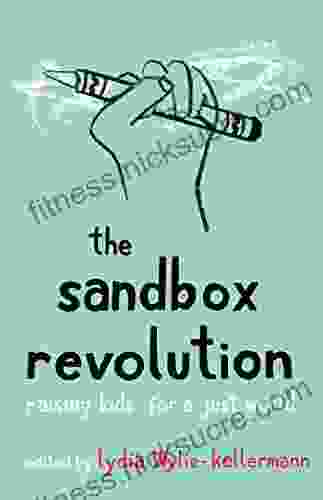
 Gregory WoodsRaising Kids for a Just World: A Guide to Fostering Empathy, Compassion, and...
Gregory WoodsRaising Kids for a Just World: A Guide to Fostering Empathy, Compassion, and... Darnell MitchellFollow ·16.1k
Darnell MitchellFollow ·16.1k Billy PetersonFollow ·3.1k
Billy PetersonFollow ·3.1k Theodore MitchellFollow ·17.8k
Theodore MitchellFollow ·17.8k Blake KennedyFollow ·8.5k
Blake KennedyFollow ·8.5k James HayesFollow ·10.5k
James HayesFollow ·10.5k Dean CoxFollow ·13.4k
Dean CoxFollow ·13.4k Tony CarterFollow ·10.6k
Tony CarterFollow ·10.6k Hunter MitchellFollow ·14.3k
Hunter MitchellFollow ·14.3k

 Derek Bell
Derek BellReflections For Your Heart and Soul: A Journey of...
In the depths of...

 Joseph Conrad
Joseph ConradThe Heroines Club: Empowering Mothers and Daughters
The Heroines Club...
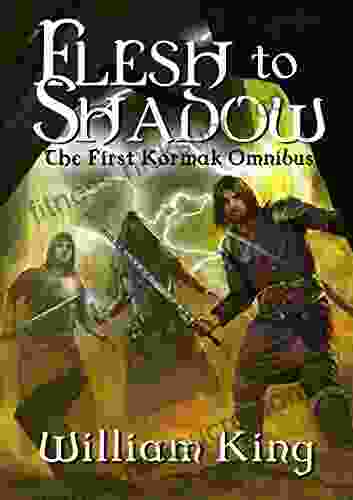
 Milan Kundera
Milan KunderaThe First Kormak Omnibus: A Literary Expedition into the...
Prepare to embark on an extraordinary literary...
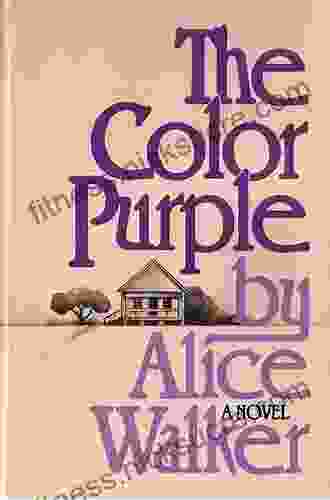
 W.H. Auden
W.H. AudenThe Color Purple: A Journey of Love, Resilience, and...
The Color Purple, a groundbreaking novel...

 Harvey Hughes
Harvey HughesTemporal Anomalies and Replacement Theory: Unraveling the...
: The Enigma of Time Time,...
4.3 out of 5
| Language | : | English |
| File size | : | 1414 KB |
| Text-to-Speech | : | Enabled |
| Screen Reader | : | Supported |
| Enhanced typesetting | : | Enabled |
| Print length | : | 129 pages |
| Lending | : | Enabled |


